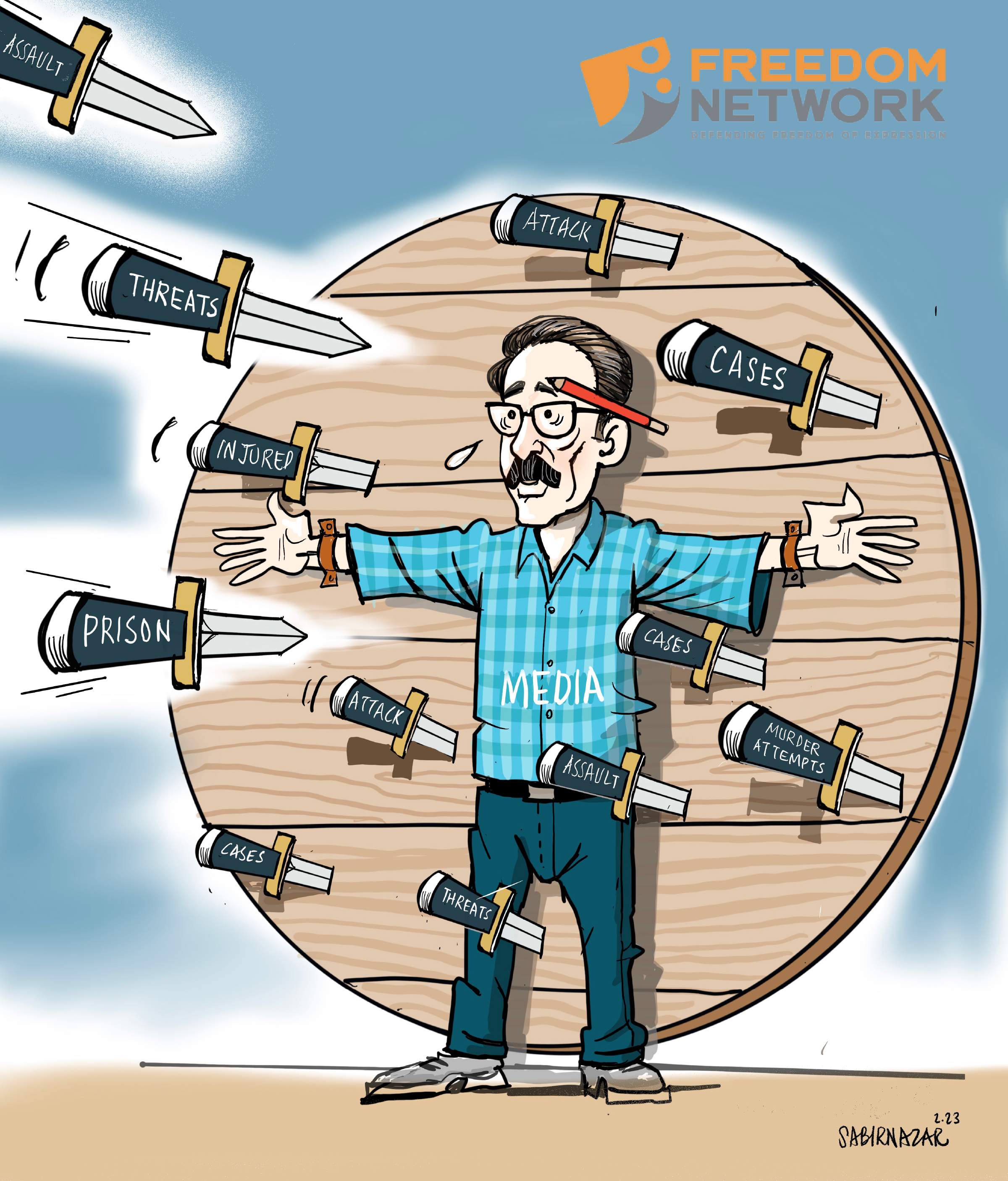Freedom Network Annual Impunity Report 2024
PRESS RELEASE
ISLAMABAD [31 November 2024]: The year 2024 has proved one of the deadliest for journalists in Pakistan, with multiple targeted killings – six casualties of media practitioners, including a YouTuber – and 57 violations recorded besides the provinces doing little to ensure combat impunity for crimes against media and its practitioners, according to media watchdog Freedom Network “Impunity Report 2024.”
The report also notes that the federal and Sindh provincial laws aimed at protecting media professionals have not been able to combat impunity for these crimes.
The annual report reveals alarming statistics – 11 assassination attempts, including five murders of journalists and a digital media practitioner, happened between November 2023 and August 2024. At least 57 violations, including threats, assaults, and legal harassment, were also recorded during the reporting period.
“Despite the enactment of Sindh Protection of Journalists and Other Media Practitioners Bill 2021 and the federal Protection of Journalist and Media Professional Act 2021, both the federal and Sindh governments have failed to enforce these laws, leaving journalists vulnerable without any use of the legal framework protections,” Freedom Network Executive Director Iqbal Khattak said while launching the special report on eve of International Day to End Impunity (IDEI) falling on November 2 globally, including Pakistan.
“The lack of political will and resources to enforce special laws for protection of journalists is keeping the situation dangerous for journalists in Pakistan,” he said. “Without robust and functioning safety mechanisms, these laws will remain ineffective, and the lives of media professionals will continue to be at greater risks,” a press release issued on Wednesday quoted Khattak as saying.
According to the report, in the year in review, Sindh was top of the list where most violations were recorded (37% or 21 out of 57 cases including three murders) followed by Punjab where 23% violations (13 cases) were recorded. Islamabad was the third most dangerous area for journalism in the year with 21% violations (12 cases). Khyber Pakhtunkhwa was fourth with 12% (seven cases including murders of two tribal journalists) while Baluchistan recorded 3.5% violations (two cases).
TV journalists faced the brunt of these cases – 30 in total which amount to 53% followed by print media with 35% cases while digital journalists 10% and radio journalists two % faced different kinds of threats during the reporting period.
Among the journalists who faced these threats also included nine percent women journalists.
The report also identified threat actors allegedly involved in these cases. These included government authorities (47%) followed by political parties (12%) and miscellaneous identified actors (16%). Unknown actors stood at 25%.
The report also introduces Pakistan’s first-ever “Media Impunity Index,” which evaluates progress in combating impunity across federal and provincial levels. “The index measures various aspects, such as policy initiatives, legislative actions and the establishment of protective mechanisms for journalists. While the federal and Sindh governments have made significant progress in passing safety laws for journalists, a critical shortcoming remains: the legislations have failed to establish the functioning safety commissions necessary to implement the laws,” the press release said.
The Index puts Sindh government on top with nine points out of 10 on progress while the federal government eight points. Balochistan and Khyber Pakhtunkhwa score just two points each for managing to produce draft laws on journalists’ safety and basic consultations among stakeholders. Punjab scores just one point – the lowest ranking among the provinces.
For interactive impunity map to know who was killed when and where, click below link:
The report emphasizes that addressing impunity is crucial for ensuring media freedom in Pakistan. With an average of six violations against media practitioners reported each month, the need for a coordinated effort between the state, media, and civil society is urgent. The federal government’s delay in establishing a safety commission for journalists in accordance with the law contrasts sharply with its initial commitments, while Sindh’s commission on journalists’ safety remains inactive despite being notified, the report underlined.
According to the Freedom Network report, there were several instances during 2024 when various courts – including district courts, high courts and the apex court – came to the rescue of journalists charged under various offences, often by state actors, serving as a silver lining over dark clouds that hand over journalists and other media practitioners.
Click below link to download full PDF version of the report:
http://www.fnpk.org/wp-content/uploads/2024/10/Freedom-Network-Impunity-Report-2024.pdf

